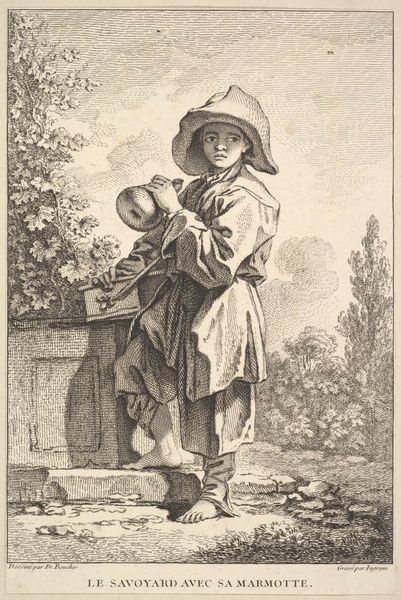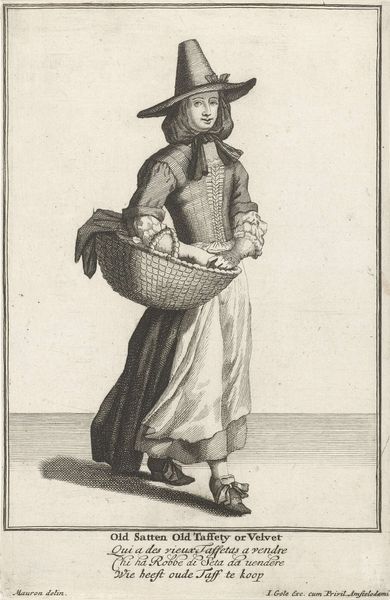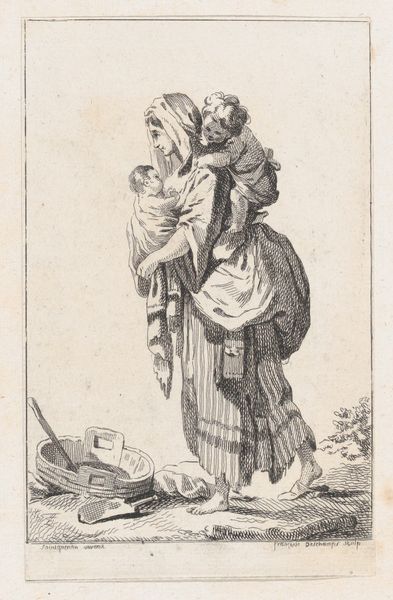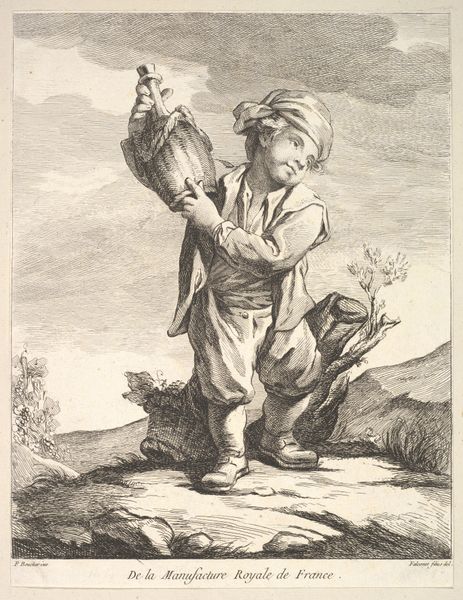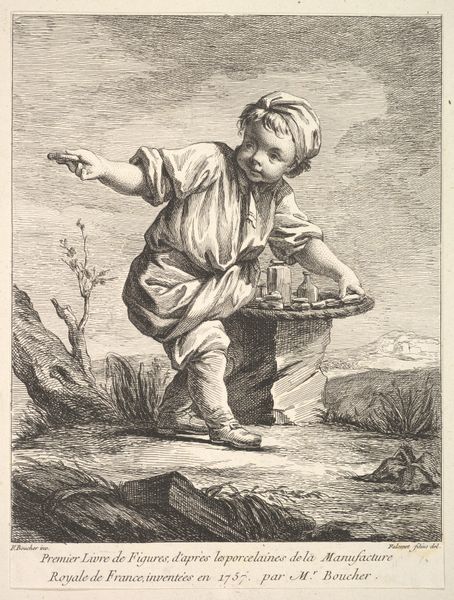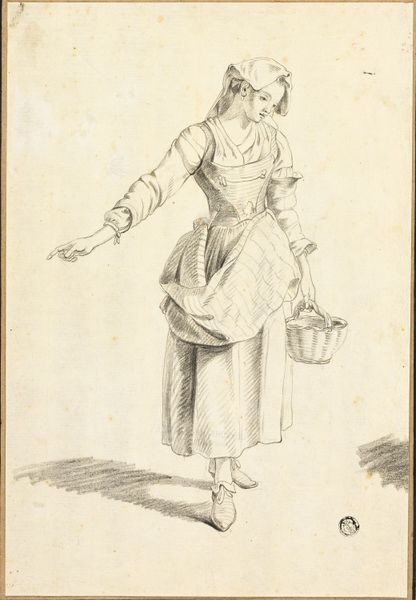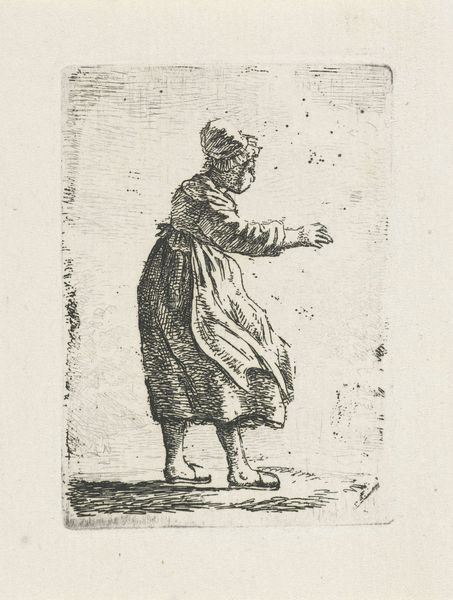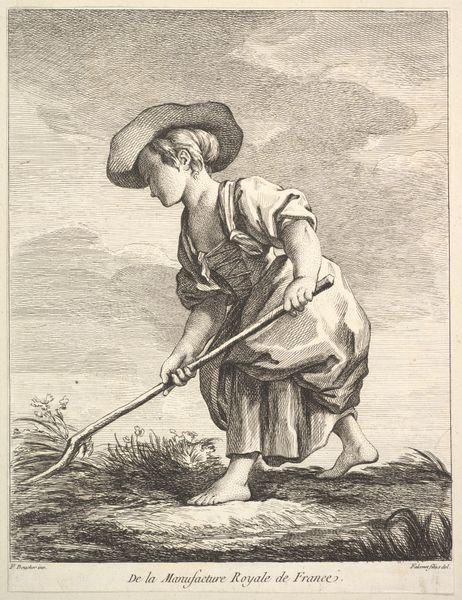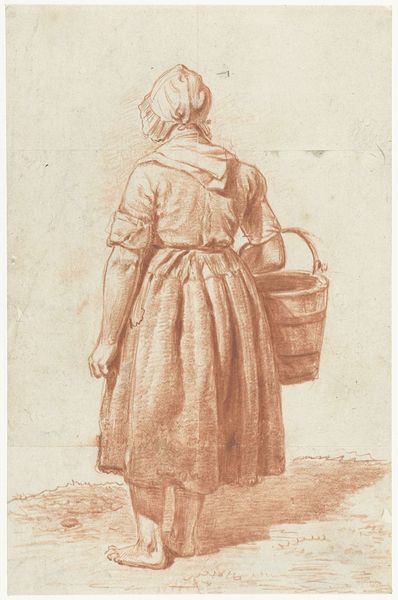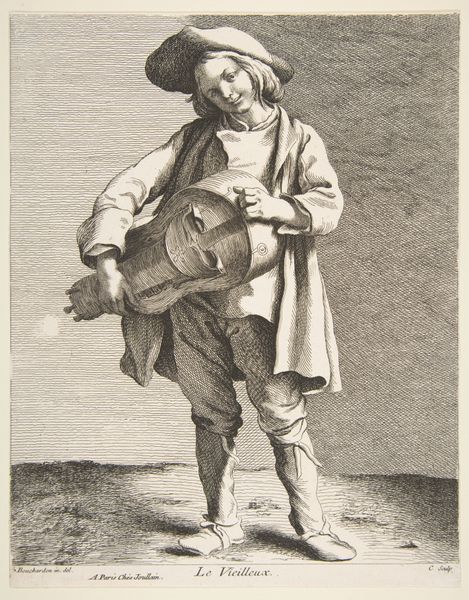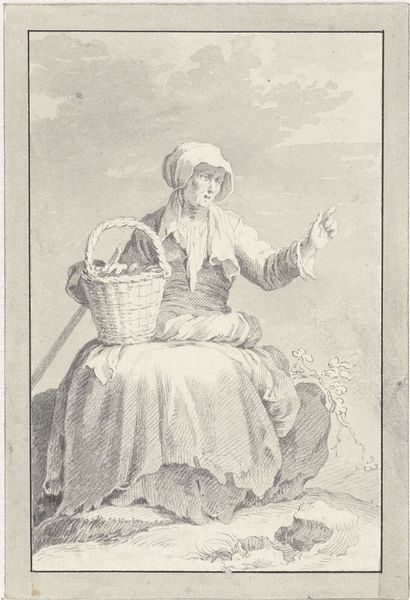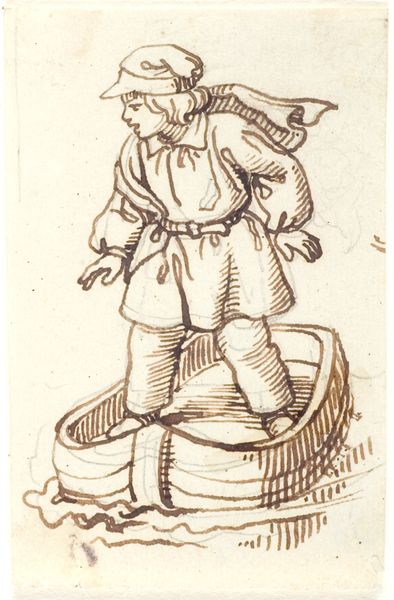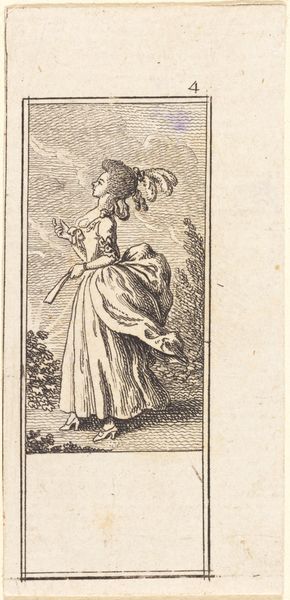
drawing, print, engraving
#
portrait
#
drawing
#
baroque
# print
#
figuration
#
men
#
genre-painting
#
engraving
Dimensions: Sheet (trimmed): 11 11/16 × 6 15/16 in. (29.7 × 17.7 cm)
Copyright: Public Domain
Curator: Looking at this print, what’s your first take on Matthieu Oesterreich's "Young Vendor" from 1752? Editor: There's an immediate contrast between the figure's somewhat dignified pose and the clear depiction of poverty in the ragged clothing. The stark lines create a somber, almost gritty mood. It speaks to the lived experiences embedded within the printmaking process. Curator: Absolutely. The engraving process itself is crucial here. Oesterreich based this on a drawing by Edme Bouchardon. Note how the precise lines define the form of the figure, his basket, and the rocky outcrop he stands upon. The etching conveys both light and shadow. Semiotics come to the forefront when the symbolic weight of those formal relationships is clear. Editor: The formal aspect you’re pinpointing certainly impacts how the materiality registers. It speaks volumes to the means of its creation and consumption during the era of Louis XV, particularly given the stated provenance of the Cabinet de S.E. Mons le Prem Ministre Comte de Brühl. It connects us to the hierarchies within 18th-century European society and artistic patronage. How does such accessibility shape the artistic creation? Curator: The etching is part of the genre scene style. Despite the economic status clearly depicted, there is a sense of balance within the composition—the figure's posture is balanced, echoed, even, in the angle of the small mountain range—all of it contributes to the harmonious, perhaps idealized quality typical of the Rococo aesthetic. Editor: That’s a fair point, but look more at the social conditions this work reflects. By focusing on a “young vendor” and circulating the imagery through reproducible engravings, we see labor visualized and commodified, distributed to a wider audience. Think of all the prints from this era and how many showed up in middle class homes in Paris. Curator: In that distribution we can consider the meaning this artwork may have delivered: was it simply genre representation, or was there another formal element at play. This work does show the ability of artists to turn mundane things into memorable artworks. Editor: Yes, exactly! I guess the core issue here remains around visibility and class—the very labor and human lives it represents now made visible, available, consumable and exchanged in early modern Europe, like a painted broadside come to life.
Comments
No comments
Be the first to comment and join the conversation on the ultimate creative platform.
